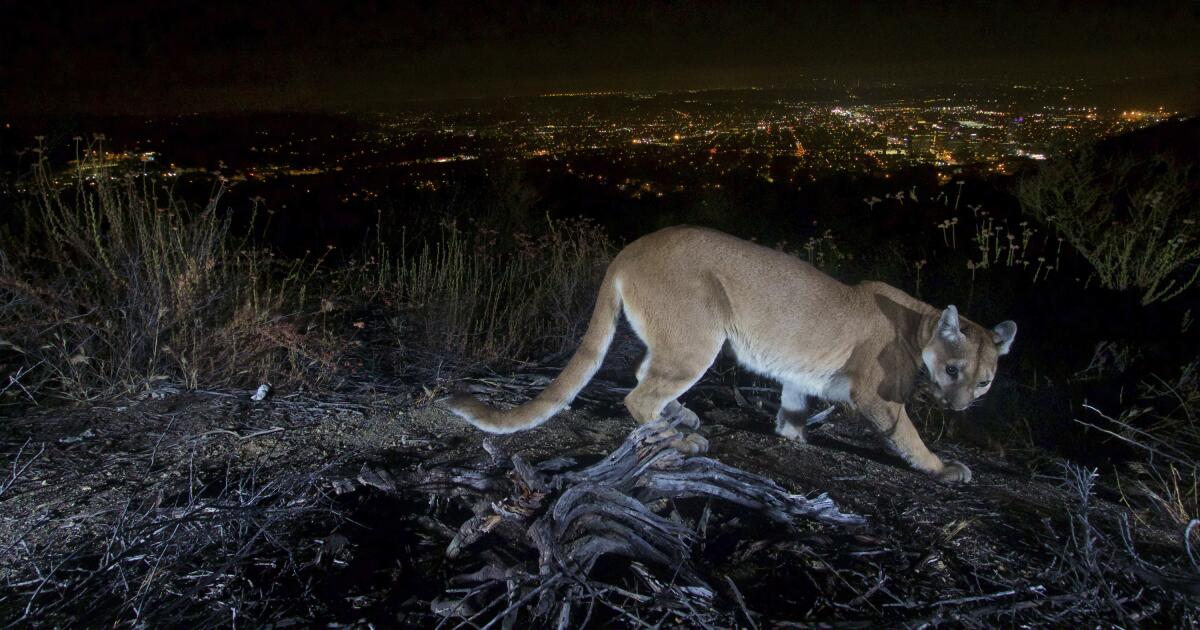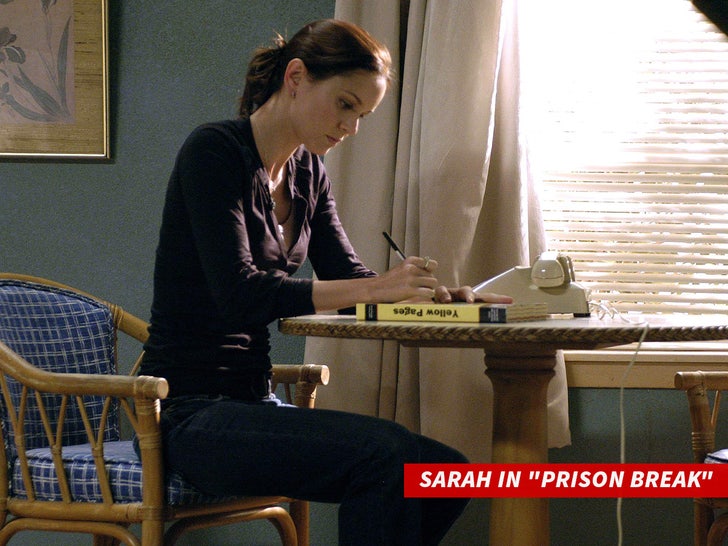Lifestyle
Gérard Depardieu will be tried for alleged sexual assaults on a film set

Actor Gerard Depardieu addresses the media during the press conference for the film ‘Saint Amour’ at the 2016 Berlinale Film Festival in Berlin, Germany, Friday, Feb. 19, 2016.
Axel Schmidt/AP
hide caption
toggle caption
Axel Schmidt/AP

Actor Gerard Depardieu addresses the media during the press conference for the film ‘Saint Amour’ at the 2016 Berlinale Film Festival in Berlin, Germany, Friday, Feb. 19, 2016.
Axel Schmidt/AP
PARIS — French actor Gérard Depardieu will face a criminal trial in October over the alleged sexual assaults in 2021 of two women on the set of a film, prosecutors announced Monday.
The 75-year-old actor, who previously has denied any wrongdoing, was detained for questioning by police in Paris for several hours earlier Monday. His lawyer, Christian Saint-Palais, later declined to comment to reporters other than to say that the actor was no longer in custody.
The Paris public prosecutor’s office said in a statement that the actor has been “summoned to appear before the criminal court” after the questioning.

Reporters wait outside the police station where French actor Gerard Depardieu is being questioned, Monday, April 29, 2024 in Paris.
Michel Euler/AP
hide caption
toggle caption
Michel Euler/AP

Reporters wait outside the police station where French actor Gerard Depardieu is being questioned, Monday, April 29, 2024 in Paris.
Michel Euler/AP
A trial will start in October “for sexual assaults likely to have been committed in September 2021” against “two victims, on the set of the film ‘The Green Shutters,’ ” the statement said. It did not name the alleged victims.
French newspaper Le Parisien has reported that a 53-year-old movie decorator has alleged that Depardieu grabbed her and kneaded her waist, stomach and breasts during filming for “Les Volets verts,” or “The Green Shutters,” according to the woman’s lawyer, Carine Durrieu Diebolt, when she filed the complaint to the Paris prosecutor’s office in February.
In an open letter last October, Depardieu said: “I have never, ever abused a woman.”
Depardieu has also been accused by more than a dozen other women of harassing, groping or sexually assaulting them. He was handed preliminary rape and sexual assault charges in 2020 following allegations from actor Charlotte Arnould.
In that case, the investigating judge completed his probe on April 17 and transferred the file to the Paris public prosecutor’s office “to review and determine next steps in the proceeding,” the prosecutor’s office said Monday.
Depardieu was long seen as a national icon in France. He has been a global ambassador for French film and enjoyed international fame with several roles in Hollywood.
The latest episode involving Depardieu came as French cinema is roiled by a #metoo awakening following actor Judith Godrèche’s call for France’s film industry to “face the truth” on sexual violence and physical abuse. She made that appeal during a live broadcast in February of the Cesar Awards ceremony, France’s version of the Oscars.

Lifestyle
The other Angelenos: What a naturalist's survey of Los Angeles wildlife reveals

Book Review
Unnatural Habitat: The Native and Exotic Wildlife of Los Angeles
By Craig Stanford
Heyday: 264 pages, $24
If you buy books linked on our site, The Times may earn a commission from Bookshop.org, whose fees support independent bookstores.
Los Angeles tends to strike outsiders as a borderless mishmash of suburbs spread over an unfriendly landscape with no significant natural source of water. When it’s not on fire, it seems to be sliding into the ocean or collapsing under the weight of its own untamable development.
And yet Los Angeles transplants will still brag to their loved ones across the country that they could go skiing and surfing in the same day (if for some reason they felt so inclined). As the conservationist Craig Stanford reminds us, however, you don’t have to drive to Big Bear or the beach to feel the pulse of nature in L.A.
In “Unnatural Habitat: The Native and Exotic Wildlife of Los Angeles,” Stanford offers Angelenos — and anyone interested in the function and dysfunction of (sub)urban ecosystems — a guide to the natural life that teems beneath our freeways, wanders into our backyards and fights for survival in the deserts and mountains that surround our city.
Stanford, who has conducted field research around the world, lives in Pasadena, in the foothills of the San Gabriel Mountains. As he details more than 150 species of L.A. flora and fauna — from native mountain lions to exotic earthworms, weeds that occur naturally and palm trees that, surprisingly, don’t — he evokes a portrait of an unusual city’s special, bizarre and unexpectedly fragile wildlife. He conjures up evolutionary histories, stories of foreign species’ arrival and their effects on an ecosystem that is massively and continuously altered by human influence.
But Stanford’s mission here isn’t simply to describe the creatures at hand — though he does do plenty of that, never hesitating to anthropomorphize even the most inhuman of them; to him, snakes are “secretive,” tarantulas “ominously deliberate.” The book excels — feels necessary, even — when it unravels the intricate interplay between human and animal habits; societal institutions and nature; common sense and our desire to decorate and navigate Los Angeles however we please.
He also offers prescriptions, micro and macro, private and public, for better stewardship of our environs. We can decide what we plant in our own gardens, for example, so Stanford advises readers to fill their yards with something native and drought-tolerant that can contribute to a more robust, stable and diverse ecosystem. (Of course, most of our city’s residents probably won’t get the memo.)
On the public front, Stanford highlights potential institutional improvements as well as bureaucratic roadblocks. In what is perhaps the book’s most compelling chapter, he writes about the man-made challenges to L.A.’s mountain lions. The gravest threat to these magnificent animals is our ubiquitous freeway system: Since 2015, more than 500 California cougars have become roadkill. Perhaps anyone could guess as much, but what a layman might never know without Stanford’s book is that our busy roads severely circumscribe the territory cougars can roam, leading to isolation and inbreeding.
A wildlife crossing is under construction over the 101 to allow cougars to traverse the freeway safely, expanding the territory they can access. But the cost of the project is high (about $90 million), as is competition for land that might otherwise serve as sanctuary for wildlife. Stanford, who usually comes across as optimistic, can wax cynical in the face of such frustrations.
His unexpected insights range from comical to shocking. He offers a snapshot of his cat having a field day with the finches in his backyard birdbath — and then explains the vicious cycle that creates invasive populations of feral cats that kill literally billions of birds across North America every year.
Stanford’s self-proclaimed ecological purism doesn’t mean he believes we should do away with nonnative species altogether, though. In fact, human interference has helped many species worth keeping around. Hummingbirds, for example, stay in L.A. year-round because our backyard feeders preclude any need for them to migrate in search of sugary plants. With that comes the responsibility to care for the wildlife we cultivate in this landscape that he acknowledges is “beautiful but largely nonfunctional.” It’s not clear whether he thinks we’re up to the task.
At his best, Stanford interweaves vivid prose, a reverence for nature and a seasoned Angeleno’s eye for what makes this city unique. At times, however, he fails to draw a connection between a species and the city, punctuating the book with vignettes laden with contextless taxonomy.
Regardless, the overall effect is a worthy and illuminating entry in the tradition of works exploring urbanization’s effect on the environment. (Stanford references Rachel Carson’s “Silent Spring,” and that author’s influence is felt throughout his book.) Moral questions abound, ranging from animal rights to humanity’s role in nature. Stanford’s fundamental message is clear and simple (and oft-repeated): To preserve a Los Angeles in which humans and nature benefit from one another, we must increase our understanding of our city’s fragile wildlife mosaic.
Stanford is heavy-handed only when he has to be, and his subtlety often hits harder. One chapter concerns a succulent so common in Los Angeles that I never knew its name: It’s called the live-forever (genus Dudleya), and, ironically, it’s at risk of extinction due to poaching. You can buy the plants at Home Depot, and yet they’re disappearing from our cliff faces and hiking paths. At the chapter’s close, Stanford articulates a profoundly upsetting truth: “Each generation grows up accustomed to the scope of Nature that surrounds it.”
Despite all he has to say about it, L.A.’s biodiversity is waning before our eyes. Fortunately, with Stanford’s help, we can acquire some of his vision for preserving our native species while effectively introducing exotic ones. Los Angeles is, after all, a city of transplants.
Daniel Vitale is a writer in Los Angeles and the author of the novel “Orphans of Canland.”
Lifestyle
With age and sobriety, Michael McDonald is ready to get personal

Michael McDonald, 72, describes his voice as a “malleable” instrument: “Especially with age, it’s like you’re constantly renegotiating with it.”
Timothy White/Sacks & Co.
hide caption
toggle caption
Timothy White/Sacks & Co.

Michael McDonald, 72, describes his voice as a “malleable” instrument: “Especially with age, it’s like you’re constantly renegotiating with it.”
Timothy White/Sacks & Co.
Even Grammy Award-winning singer/songwriter Michael McDonald says he feels like an imposter sometimes.
“I don’t mean to be self-deprecating when I say this, but I never really understood why people gave me so much credit as a musician,” McDonald says. “I really am just, more or less, a songwriter who plays a little bit of piano.”
It’s an understatement. McDonald’s singular sound that has captivated audiences for generations and has given life to remixes, remakes and thousands of impressions from Tonight Show skits to The Voice.
His new memoir, What A Fool Believes, which he co-wrote with comedian Paul Reiser, chronicles McDonald’s childhood in Ferguson, MO., his early years as a session musician and his decades-long career as a member of Steely Dan and The Doobie Brothers and as a solo artist.

Throughout his career, McDonald was known for crossover hits. His 1982 single, “I Keep Forgettin’,” cracked the top 10 of Billboard’s Pop, R&B and Adult Contemporary charts, and was later sampled by hip-hop artists Warren G and Nate Dogg in their 1994 hit, “Regulate.”
McDonald says that earlier in his career, he tended to avoid writing about himself directly in songs. But looking back now, he’s noticed a shift in his music, which he attributes, in part, to becoming sober in the mid 1980s.
“More than anything, I think what people who suffer from addiction share universally is that we’re kind of hiding from ourselves. We’re kind of hiding from our feelings,” he says. “I’ve learned in sobriety to slowly peel back different layers.”
Interview highlights

Jim Shea/Brian Moore/Sacks & Co.

Jim Shea/Brian Moore/Sacks & Co.
On his first band, Mike and the Majestics
It was Mike and the Majestics, and I soon got demoted, and it was just the Majestics. We started when we were all around 12. I think our first gigs happened more like when I was 13. And the other guys were a year and two older than me.
Back then, we were playing basement parties, birthday parties for girls we knew in the eighth grade. And then we graduated to fraternity parties, at a very tender age, which my mother was not happy about. And so she enlisted my father to come on as our manager — not before we were exposed to some of the rites of passage that we were probably too young to witness. … We thought we’d died and gone to heaven. Because the girls were all really cute, and the frat guys were out of their minds and they would pass the hat. … But then we had a curfew because we were all like 12 and 13 years old. And in the course of all this, we learned all the filthy lyrics to “Louie Louie” and songs like that were college staples.
YouTube
On writing the Doobie Brothers’ song, “Takin’ It To The Streets,” which was inspired by gospel
The intro of the song just kind of popped in my head, and I couldn’t wait to get to the gig and set my piano up and pick the chords out on the piano. … It just felt like an opening to a gospel song and I loved gospel music at the time. … What better motif for that very idea of people falling through the cracks of our society and … and how do we do better by each other than a gospel song. … It took me a minute to come up with “Takin’ to the Streets” because that came from the idea that … we’ve got to do better by each other or this is what it’s going to come to. It’s going to be settled one way or the other. These kinds of progressive ideas and reforms don’t come easily, and they come by necessity. … We’re going to meet on the same plane one way or the other, maybe we can do it out of love for each other and consideration and empathy before we have to do it out of frustration.
On the realization that white artists were covering Black musicians’ songs and being praised for it

I think that was pretty much the experience of a lot of people in my generation growing up. White kids who thought that Pat Boone wrote, “Tutti Frutti.” We didn’t know any better, you know, because radio was so segregated, as was everything, in the United States at the time. It was a sad division in what really was such a strong part of our culture, you know, but it was always kind of isolated away from and giving credit to the people who really brought those art forms to America and, really gave America its own true artistic art form: Jazz and R&B music and gospel. …
For instance, the English invasion bands, we thought that they wrote those songs like, “It’s All Over Now” by The Rolling Stones was Bobby Womack and his brothers and had a group called The Valentinos, and that song was a No. 1 hit on Black radio when the Stones released it. … I never cease to be surprised by the roots of some music that I thought was more of a pop record, but that really has its roots in the blues tradition and was written by American artists who didn’t really enjoy the success of the song that other artists did.
On being big in the Black community
Whenever that was brought to my attention, by friends of mine who liked our music, I was really flattered by that. And I continue to be flattered because, to me, that’s really the test of anything I ever really desired to do was to represent, in my own way, what I truly believe is American music. To have that privilege of being able to do that and have it accepted by the audience who I believe created it, who invented it and brought it to all of us.
On how his voice has aged
The voice is a malleable instrument, at best, and especially with age, it’s like you’re constantly renegotiating with it. I find that at my age now, I’m just trying to figure out what my strengths are and what I can use to put the song across. I wish in some ways I could sing with the range or the sense of pitch or whatever it is I had when I was younger. But unfortunately, those things change over the years. …
I’ve been less reluctant to lower keys and stuff, and especially if it brings a better performance out of me, but I found that a lot of things have changed. … I have to kind of learn what still works for me when I’m singing, because I don’t want to be trying to sound like I used to sound and have that be obvious. I want to just be able to do what I do best now.
Sam Briger and Susan Nyakundi produced and edited this interview for broadcast. Bridget Bentz, Molly Seavy-Nesper and Meghan Sullivan adapted it for the web.
Lifestyle
'Prison Break' Star Sarah Wayne Callies Claims Male Costar Spat in Her Face

Sarah Wayne Callies claims one of her male costars on “Prison Break” spat in her face — just one example, she says, of the rampant misogyny she had to deal with as the only gal.
The actress went on the ‘Broad Ideas’ podcast Monday, with SWC explaining that playing Sara Tancredi on the FOX series — which aired from 2005 to 2009 — was a double-edged sword … ’cause she faced harsh realities, including an alleged ugly incident she recounts.
Broad Ideas with Rachel Bilson

Sarah says that a male actor on the show hawked one onto her mug — and while she doesn’t get into specifics, including any names, she says it was emblematic of the vibe on set.
She does suggest she’ll get more into this in her own podcast eventually … but she left the hosts shocked by the revelation — and you can tell, even now, Sarah grapples with how she handled it at the time.
As she says … she would have to go home sometimes and talk her husband “out of going to hospitalize somebody.” So, on its face, it sounds like her hubby was aware of this.
The show — which starred the likes of Wentworth Miller and Dominic Purcell — became an instant hit at the time … and catapulted its cast to stardom — and Sarah attributes their new rush of fame to the chaos and messiness on set.

Despite the challenges she dealt with … Sarah made it clear not all the men on the show were jerks — some, in fact, were total gentlemen and she says she made friends too.
Looks like Sarah’s reclaiming her on-set experiences and making the best of it … especially after launching the “Prison Breaking with Sarah and Paul” podcast earlier this year, where they watch and dissect old episodes.
The show was so successful it spawned a TV film in 2009, and even saw a revival season in 2017 — with Sarah appearing in them all. As for the alleged spitter … TBD.
-

 News1 week ago
News1 week agoSkeletal remains found almost 40 years ago identified as woman who disappeared in 1968
-

 Movie Reviews1 week ago
Movie Reviews1 week ago“Kingdom of the Planet of the Apes”: Disney's New Kingdom is Far From Magical (Movie Review)
-

 World1 week ago
World1 week agoIndia Lok Sabha election 2024 Phase 4: Who votes and what’s at stake?
-

 World1 week ago
World1 week agoUkraine’s military chief admits ‘difficult situation’ in Kharkiv region
-

 Politics1 week ago
Politics1 week agoTales from the trail: The blue states Trump eyes to turn red in November
-

 World1 week ago
World1 week agoBorrell: Spain, Ireland and others could recognise Palestine on 21 May
-

 World1 week ago
World1 week agoCatalans vote in crucial regional election for the separatist movement
-

 Politics1 week ago
Politics1 week agoNorth Dakota gov, former presidential candidate Doug Burgum front and center at Trump New Jersey rally











